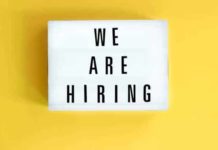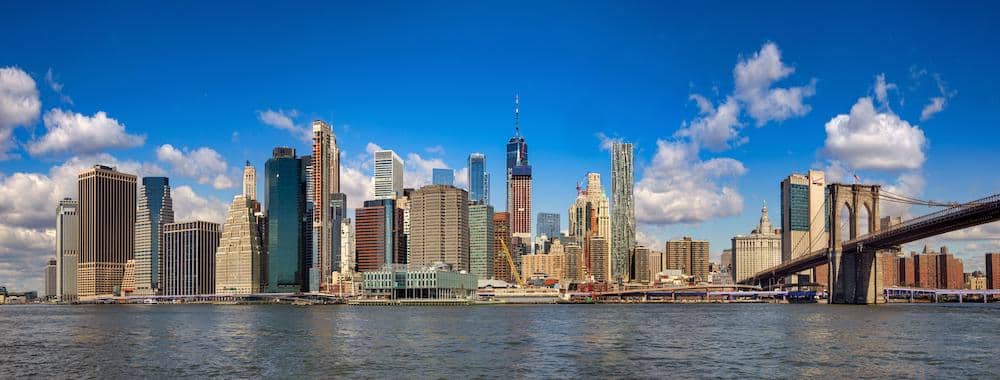
Trying to maximise every moment in Manhattan? Make your life easier and head to nycgo.com for itinerary inspiration covering everything from what’s on, what to do, where to go and how to get there. And now, with their focus on “Manhattan Like a New Yorker”, get to see the hidden gems or match your wish list with what Manhattan has to offer whether a K-Pop shop, vintage fashion, 5 borough bike ride, museums, panoramic views, boat rides or maybe something else?
Let’s dive into a fascinating synopsis of Manhattan’s neighbourhoods thanks to NYC & Company and their Get Local NYC initiative.
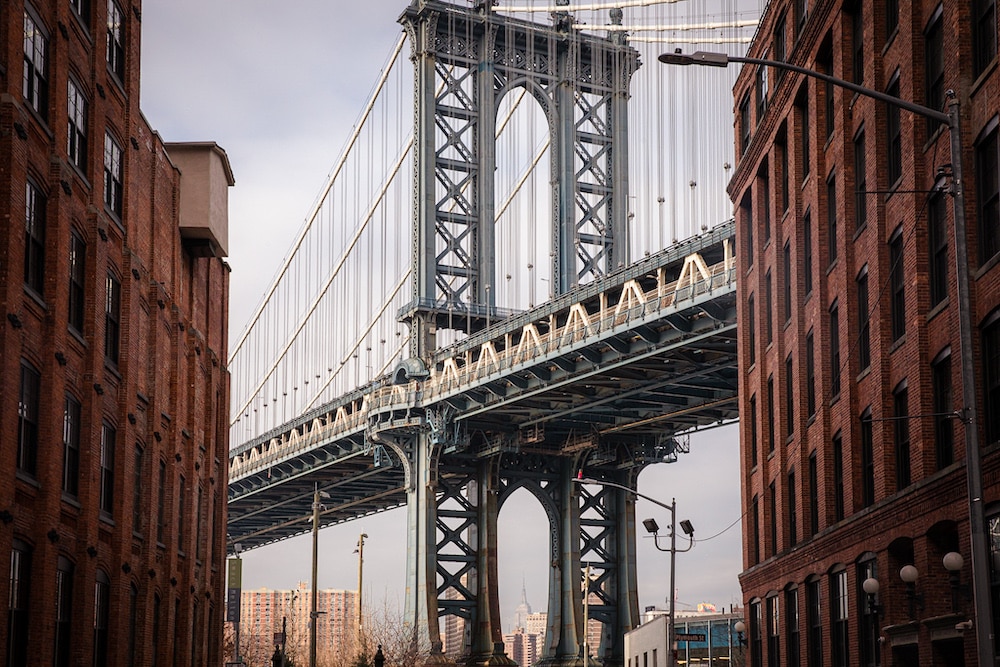

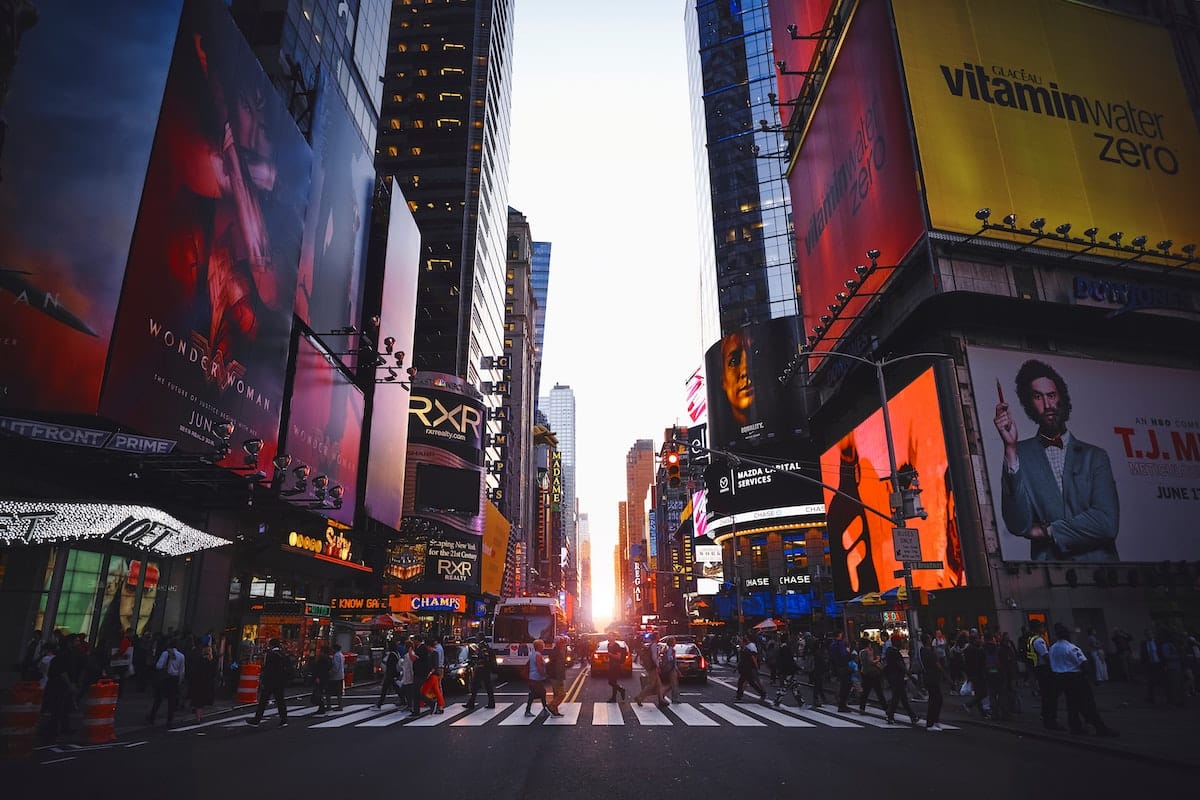
Manhattan has hundreds of hotels, from boutiques on residential streets to brand names in the heart of Times Square. There’s something in every price range and nearly every neighbourhood, from 5-star properties like The Ritz-Carlton, Mandarin Oriental and St. Regis; terrific deals from popular brands like Hilton and Marriott; a focus on sustainability at properties like the Crosby Street Hotel in Soho and 1 Hotel Central Park; historic landmarks like The Beekman Hotel; and captivating themes at spots like the Arthouse Hotel on the Upper West Side. Visit nycgo.com/hotels.
The Battery, a waterfront park at the southern tip of Manhattan, offers stunning views of New York Harbor. Take a ride on the SeaGlass Carousel and a boat ride. The Staten Island Ferry is free and offers a glimpse of the Statue of Liberty and Ellis Island. To visit Liberty Island, where the statue is located, and Ellis Island, home to the National Museum of Immigration, you must buy a ticket from Statue City Cruises. (The same boat stops at both sites.)
There’s also a ferry to Governors Island ($4 each way for adults or $2.75 on NYC Ferry). The island was a military base and Coast Guard facility for more than 200 years. Today it’s a landscaped park with a hammock grove, a 57-foot-long slide, bike rentals, historic sites, art installations, events and stunning views. New attractions on Governors Island include The Open Orchard, a living archive of heirloom fruits, with multiple varieties grafted onto single trees so that any one tree can produce different fruits, as well as QC NY Spa.
Other sites include the Museum of Jewish Heritage, National Museum of the American Indian, and Fraunces Tavern and Museum. You’ll find the famous Charging Bull statue on Broadway near Morris Street, and the Fearless Girl statue on Broad Street near Wall Street, across from the New York Stock Exchange. Federal Hall, at 26 Wall St., is an 1842 reconstruction of the building where George Washington was sworn in as the nation’s first president.
Head north and west to Trinity Church near Wall Street and Broadway to pay your respects to Alexander Hamilton. Hamilton, his wife Eliza and her sister Angelica are buried in the church’s graveyard.
Nearby is the World Trade Center complex. Head up to the One World Observatory on the 102nd floor of One World Trade. Spend some time at the 9/11 Memorial. Two reflecting pools occupy the footprints of the twin towers that were destroyed that day. Bronze parapets around the pools bear the names of those who died. Amid the memorial’s many trees, be sure to look for the Survivor Tree. It was grown from an 8-foot stump found in the wreckage of the fallen buildings.
The 9/11 Memorial & Museum (180 Greenwich St.) tells the story of the construction, destruction and rebuilding of the World Trade Center through photos, videos and artifacts. A wall of blue squares symbolizing the colour of the sky on 9/11 bears this quote from Virgil: “No day shall erase you from the memory of time.”
The Trade Center complex also includes the Oculus, a transit hub for 12 subway lines and the PATH train to New Jersey, but its interior ribbed white wings also offer a great backdrop for selfies. Retailers are located throughout the Oculus and in the on-site Westfield mall. Walk through the concourse or go aboveground to another shopping complex at Brookfield Place, which also has a food court called Hudson Eats. Across the way is Le District, a French restaurant and market with tables facing the Hudson River. An outpost of the Italian food emporium Eataly is located at Four World Trade.
The Seaport is located on the East River side of Lower Manhattan. Attractions include the South Street Seaport Museum, two historic ships, bars and restaurants, a rooftop summer concert series at Pier 17 and a variety of sightseeing cruises from nearby piers. And if you’re looking to go by boat to Brooklyn, the Bronx or the Rockaways in Queens, catch an NYC Ferry for just $2.75.
The northern boundary of Lower Manhattan is Chambers Street. City Hall and City Hall Park are located here across from the entrance to the Brooklyn Bridge. Two blocks north at 290 Broadway is the African Burial Ground National Monument, a burial ground for free and enslaved Africans dating to the 1630s.

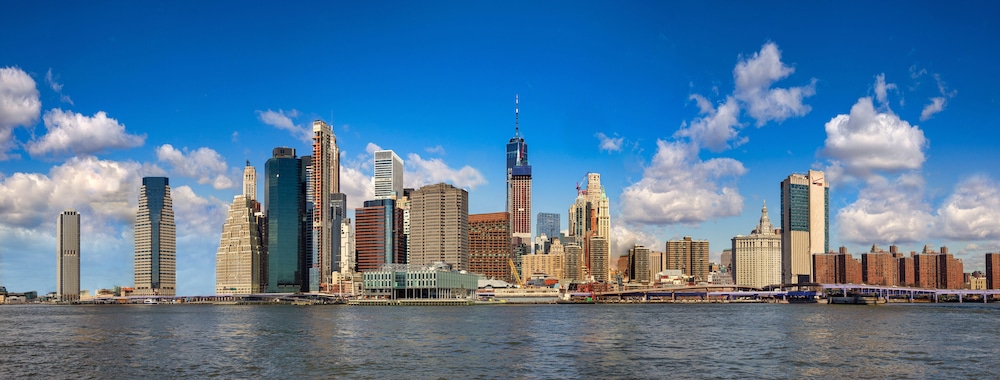
Take the R train to Canal Street and head to Mott Street. This is the center of Chinatown, offering souvenir shops, sidewalk vendors and restaurants. Get an egg tart at Golden Steamer, seafood at Ping’s, dim sum at the Nom Wah Tea Parlor or the house specialty at Peking Duck House. For shopping, visit Ting’s Gift Shop, Yunhong Chopsticks and Ten Ren Tea.
Just west of Mott Street is Columbus Park, where visitors might see locals playing Ping-Pong or doing tai chi. But in the 19th century, this was the heart of Five Points, as portrayed in the movie Gangs of New York. The Church of the Transfiguration (29 Mott St.) served Irish Catholics in the 1850s, followed by Italians, then Cantonese Catholics, then Fujianese.
Look for a statue of Confucius near Division Street and the Bowery, and a statue of Lin Ze Xu, who fought Britain’s opium trade in the 19th century, at Chatham Square. Learn about Buddha’s life story from a series of panels inside the Mahayana Buddhist Temple (133 Canal St.).
Just north of Chinatown lies Little Italy. Try the pizza at Rubirosa, stock up on imported goods at Di Palo’s Fine Foods and save room for dessert from Ferrara Bakery, which opened in 1892 and still serves some of the best gelato, cappuccino and cannoli anywhere. The Feast of San Gennaro takes over the neighborhood for 10 days in mid-September each year.
Chic, glamorous and artsy: That’s the vibe in Tribeca (an acronym for “triangle below Canal Street”) and Soho (south of Houston Street).
Pick from upscale Soho shops, including Alexander Wang, Balenciaga, Chanel, Céline, Burberry, Prada and Rag & Bone. For more affordable shopping, head to Broadway.
For those into the arts, check out The Earth Room, an interior earth sculpture at 141 Wooster St., and the Louis K. Meisel Gallery (141 Prince St.), which was featured in Sex and the City. See a play at The Public Theater (that’s where Hamilton premiered) or time a visit for the Tribeca Film Festival in June.
Other notable spots include the playground and mini-golf course at Pier 25; the fire station featured in the Ghostbusters movie (14 N. Moore St.); and the “Jenga” tower (56 Leonard St.), an architectural marvel of irregular stacks. Lombardi’s (32 Spring St.) claims to be the birthplace of pizza, while the “cronut” was born at Dominique Ansel Bakery (189 Spring St.). In Tribeca, Locanda Verde, Frenchette, Tiny’s and the Bar Upstairs, and Walker’s are among the neighborhood’s many eating and drinking establishments.
Lower East Side & East Village
Long gone are the immigrant pushcarts of the early 20th century and the graffiti and rent strikes of the late 20th century. There are still plenty of ways to experience the Lower East Side’s diversity, creativity and bohemian spirit.
Cultural venues include the Nuyorican Poets Café (236 E. 3rd St.), hosting poetry slams, readings, plays, workshops, salsa, jazz and more; La MaMa Experimental Theatre Club (66 E. 4th St.); the New Museum (235 Bowery) for contemporary art, and the Tenement Museum for the neighbourhood’s immigrant history.
Hang out with the locals in Tompkins Square Park, then head to St. Mark’s Place for Korean snacks and a K-pop shop at Oh K-Dog, used books at East Village Books, punk fashion at Search & Destroy and authentic Japanese food at Kenka.
Tattoo parlours include Daredevil Tattoo, East Side Ink and Bang Bang. For vintage clothing, check out L Train Vintage, Ritual Vintage, Buffalo Exchange, the legendary Trash & Vaudeville, Jane’s Exchange for children’s and maternity wear, and Pilgrim New York for designer vintage.
Classic eateries include Katz’s Delicatessen (205 E. Houston St.), known for massive pastrami sandwiches and the “I’ll have what she’s having” scene from the movie When Harry Met Sally; and Veselka (144 Second Ave.), serving hearty Ukrainian food since the 1950s. Newer foodie favourites include Souvlaki GR, Spicy Village, The Bun Hut and Sidney’s Five, while popular bars range from Garfunkel’s Speakeasy and Attaboy to McSorley’s Old Ale House, a legendary Irish bar famous for refusing to allow women inside until 1970.
Greenwich Village & Meatpacking District
To reach the heart of Greenwich Village, take the A, B, C, D, E, F or M train to the West 4th Street station. Travel east to Washington Square Park, framed by a grand marble arch. Find students from nearby New York University, buskers, skateboarders, hippies and hipsters. Travel west to Christopher Park and the Stonewall National Monument. This is where the gay rights movement began in 1969, when LGBTQ+ patrons fought back against a police raid at The Stonewall Inn.
It’s been six decades since Bob Dylan and other folk singers found fame in the Village, but the neighborhood is still a great place for live music with clubs like Cafe Wha?, The Bitter End, the Village Vanguard and the Blue Note. Marie’s Crisis Café is a lively piano bar, and the Cherry Lane hosts live theater.
Other places of note include the tranquil garden at The Church of St. Luke in the Fields (487 Hudson St.); White Horse Tavern (567 Hudson St.), where regular patrons included Jack Kerouac and Dylan Thomas; and 75½ Bedford St., one of the narrowest buildings in New York at less than 10 feet wide (poet Edna St. Vincent Millay lived there). Many people venture to the West Village to see the exterior shots from the TV shows Sex and the City and Friends. Full tours of movie and TV locations across New York City are available via On Location Tours.
Just north of the West Village is the Meatpacking District. Here the Whitney Museum of American Art (99 Gansevoort St. at Tenth Ave.) offers stunning views from its outdoor terraces and an art collection that includes work by Andy Warhol, Georgia O’Keeffe, Joseph Stella, Jasper Johns and Alexander Calder.
Nearby is the entrance to the High Line, a linear park built on an elevated freight rail line 30 feet above street level. Its landscaping, art installations, historic features and ever-changing city views have made it one of the most popular attractions in New York City. The High Line runs about a mile north, to 34th Street.
Near 13th Street at Pier 55 is Little Island, a new and unique urban oasis that’s part of Hudson River Park.
Union Square, Flnion Square, Flatiron District & Nomad
Union Square, the Flatiron District and Nomad are located in Manhattan’s East 20s and teens. Union Square Park hosts its lively outdoor Greenmarket on Mon, Wed, Fri and Sat. Area retailers include Fishs Eddy home goods, ABC Carpet & Home and more.
The landmarked triangular Flatiron Building is at 175 Fifth Ave. Nearby Madison Square Park offers art installations, landscaping and the original location for Shake Shack. The area is also home to two very different museums: the Museum of Sex (Fifth Avenue and 27th Street) and the National Museum of Mathematics (11 E. 26th St.). Fotografiska NYC is a photography museum in the area worth a visit.
Murray Hill is a residential neighborhood starting in the East 20s, but a stretch of Lexington Avenue from 25th to 30th streets is called Curry Hill thanks to its cluster of South Asian restaurants, including Kailash Parbat, 99 Lexington, and Dhaba at 108 Lexington. Kalustyan’s, at 123 Lexington, is an emporium for spices and ethnic foods.
Chelsea is home to some 200 art galleries, dozens of cafés, bars and restaurants, and unique venues for shopping, culture and just plain fun. There’s the famed David Zwirner Gallery (525 W. 19th St.); the Rubin Museum of Art (150 W. 17th St.), which is devoted to Himalayan culture; and the McKittrick Hotel, where you can have a drink at the Gallow Green rooftop garden bar and then immerse yourself in Sleep No More, a noir-ish participatory interpretation of Macbeth. Chelsea Piers has everything from ice-skating to a bowling alley; Chelsea Market is an indoor global food hall; Chelsea Flea is a market for antiques and vintage goods. Try Palestinian food at Qanoon and burgers at the kitschy Trailer Park Lounge.
Hudson Yards & Hell’s Kitchen
Hudson Yards is a relatively new neighbourhood in the West 30s along the Hudson River. Attractions include The Shed, an arts venue; Mercado Little Spain, with food stalls and a restaurant by chef José Andrés; and Edge, an observation deck with a glass floor and walls 100 stories above street level.
Manhattan West is a recently opened development nearby, including office space, retail, dining and hotel accommodations.
Hell’s Kitchen includes the Javits Center, at 34th Street and Eleventh Avenue; the Intrepid Sea, Air & Space Museum, at Pier 86 near 46th Street, and the embarkation point for Circle Line Sightseeing Cruises at 43rd Street and Twelfth Avenue. Hell’s Kitchen also offers LGBTQ+ nightlife including multilevel nightclub The Q NYC.
The Empire State Building, Times Square, Macy’s, Grand Central Terminal and Rockefeller Center: They’re all among New York’s most iconic attractions, and they’re all in Midtown Manhattan.
At the Empire State Building, at 34th St. & 5th Ave., enjoy the open-air observatory on the 86th floor.
Macy’s, the largest department store in the US is on 34th Street near Penn Station, the Moynihan Train Hall and Madison Square Garden, where the New York Knicks and New York Rangers play. At Broadway and 32nd Street is Korea Way, known for Korean restaurants and karaoke bars.
Times Square is at Broadway and 42nd Street. and the nearby Theatre District runs from 40th to 54th Street. Look for deals on the TodayTix app, research rush and lottery tickets, and stop by the TKTS booth at 47th Street and Broadway for same-day discounts. NYC Broadway WeekSM also takes place in Sept and Jan/Feb each year, offering 2-for-1 tickets.
Among the neighborhood’s many places to drink and dine are the revolving rooftop bar at the Marriott Marquis hotel and classic restaurants like Joe Allen, Sardi’s, Chez Josephine and Carmine’s. And don’t forget The Drama Book Shop (266 W. 39th St.), which carries scripts and other theater-related work.
Head east from Times Square along 42nd Street to Bryant Park, a lovely urban oasis on 42nd and Sixth Avenue, with a carousel, skating rink, free games and activities. The main branch of the New York Public Library is in a landmark beaux arts building on Fifth Avenue and 42nd Street, guarded by stone lions named Patience and Fortitude. Pop inside to see the Rose Main Reading Room, with its wedding-cake chandeliers and ceiling mural of a sky, and check out the permanent exhibition of library treasures.
Continuing east along 42nd Street you’ll hit Grand Central Terminal, another beaux arts landmark. Find the whispering gallery, where visitors can press their face into a corner and have their whisper heard by someone in a corner across the way.
The Chrysler Building stands at 42nd Street and Lexington Avenue with its gorgeous, gleaming arch-patterned spire. Farther east, the United Nations is located at 42nd Street and First Avenue. Its elegant Secretariat building, known for a sleek glass curtain facade, is a modernist architectural icon. Guided tours of the UN are available in many languages.
The area’s newest skyscraper One Vanderbilt opened recently and includes immersive art experience Summit One Vanderbilt, which also includes New York City’s newest observation deck.
Rockefeller Center spans 48th to 51st streets between Fifth and Sixth avenues. It’s home to a stunning collection of art deco skyscrapers, the Prometheus and Atlas sculptures, the Top of the Rock observatory, the Rainbow Room, the skating rink (currently a roller rink for the spring, summer and fall months) and the famous Christmas tree in December. The Museum of Modern Art is two blocks away on 53rd Street. MoMA’s permanent collection is simply astounding, with one masterpiece after another, including van Gogh’s Starry Night, Monet’s Water Lilies, Wyeth’s Christina’s World and many other world-famous works.
St. Patrick’s Cathedral stands across Fifth Avenue from Rockefeller Center. Heading up Fifth toward Central Park, visitors will find luxury retailers like Saks Fifth Avenue, Bergdorf Goodman and Cartier, along with American Girl Place, the glass cube Apple Store and The Plaza Hotel, where visitors can have tea in The Palm Court or take a selfie with a portrait of Eloise, the little girl from the famed children’s book series.
Central Park starts at 59th Street, running east to west from Fifth to Eighth avenues and north to 110th Street. It’s a picturesque oasis smack in the middle of Manhattan, with winding paths, ponds and bridges, trees and boulders, gardens and fields. Attractions include the zoo, the carousel, a skating rink, the Conservatory Garden and Belvedere Castle. You can tour it by bike or in a horse-drawn carriage; you can rent a rowboat or sail a model boat.
Central Park is also known for its statues, including one of Balto, the sled dog that brought medicine to stem an epidemic in Alaska; the Women’s Rights Pioneer Monument depicting suffragists Susan B. Anthony, Elizabeth Cady Stanton and Sojourner Truth, and the Alice in Wonderland sculpture featuring the White Rabbit, Cheshire Cat, Dormouse and Mad Hatter.
Strawberry Fields, near 72nd Street and Central Park West, honors John Lennon, who lived in the nearby Dakota building. He was murdered on the street there in 1980 by a deranged fan.
Columbus Circle is located by the park’s 59th Street entrance on the west side. Across the way is an upscale mall, The Shops at Columbus Circle. Inside you’ll find Adam and Eve, two plump nude sculptures, 12 feet tall, by Fernando Botero.
West of Central Park, attractions include The Cathedral Church of St. John the Divine, Grant’s Tomb, Riverside Park, the Beacon Theatre, the New-York Historical Society and Lincoln Center, home to the New York City Ballet, the New York Philharmonic, the Metropolitan Opera and many others.
The American Museum of Natural History, at 81st Street and Central Park West, has an enormous collection. Treasures include the T. rex dinosaur, the Great Blue Whale and the skeleton of Lucy, an early hominid. Next winter, the museum will unveil the Richard Gilder Center for Science, Education, and Innovation. This major new space will include a research library and learning center, an insectarium, a permanent butterfly exhibit, a theater and more.
Get a bagel from Absolute Bagels or Barney Greengrass. Have a fancy dinner at Per Se. Go for an Alice in Wonderland–themed tea at Alice’s Tea Cup. Shop for gourmet groceries at Zabar’s. Have a drink at the Empire Hotel’s rooftop bar.
Head here for upscale shopping and museums. Bloomingdale’s flagship is at 59th Street and Lexington, while Madison Avenue is home to a string of high-end stores like Bottega Veneta Maison, Celine, Dolce & Gabbana, Hermès, Missoni, Tom Ford and Ralph Lauren.
Fifth Avenue north of 80th Street is known as Museum Mile. It includes the Neue Galerie (German & Austrian art); The Jewish Museum; El Museo del Barrio (Latin art); the Cooper Hewitt, Smithsonian Design Museum; and the Guggenheim Museum, famous for its spiral building designed by Frank Lloyd Wright. The most visited museum of all is The Metropolitan Museum of Art with a collection that includes Egyptian mummies, Renaissance paintings, Greek and Roman artifacts and The Costume Institute.
Other notable sites include Gracie Mansion, where the Mayor lives (tours are available); Carl Schurz Park, on the East River near 84th Street; and the 92nd Street Y, a community and cultural center that hosts a variety of events.
Lexington Candy Shop is an old-school soda fountain and luncheonette, and the Schaller & Weber market is one of the last holdouts from Yorkville, a once-bustling neighborhood for German immigrants.
Take the tram, a ferry or the F train to Roosevelt Island. In addition to panoramic views of Manhattan, there is Four Freedoms Park, a sleek, modernist plaza designed by architect Louis I. Kahn that honors President Franklin Delano Roosevelt; the Blackwell Island Lighthouse; the spooky Renwick Ruin, an abandoned smallpox hospital; and ta one-of-a-kind hotel retreat, the Graduate Roosevelt Island.
Harlem holds an iconic place in African American history, politics and culture. Places to visit include the Apollo Theater (253 W. 125th St.), which will expand to include the Victoria Theater project in fall 2022; the Schomburg Center for Research in Black Culture (515 Malcolm X Blvd.), which hosts exhibitions; The National Jazz Museum (58 W. 129th St.); and Marcus Garvey Park, where the Harlem Cultural Festival featured in the film Summer of Soul took place. The beautiful 1890s brick-and-stone townhouses along West 138th and 139th streets are known as Strivers Row, where successful Harlemites like musician Eubie Blake and Congressman Adam Clayton Powell lived. A sculpture of Harriet Tubman is located on St. Nicholas Avenue near 122nd Street.
Popular Harlem restaurants include the legendary Sylvia’s, Marcus Samuelsson’s Red Rooster, Melba’s and Harlem Shake, along with Charles’ Pan-Fried Chicken, Ponty Bistro, Abyssinia Ethiopian Restaurant and LoLo’s Seafood Shack.
If interested in hearing gospel music in Harlem, bear in mind that churches are places of worship. Be prepared to stay for the entire service, and show your appreciation with a monetary donation. Among the churches that allow visitors are Canaan Baptist Church of Christ, First Corinthian Baptist Church and the Mount Neboh Baptist Church; check websites for timing, policies and ticketing. Tours can also be booked that will arrange access to gospel services, and some restaurants offer gospel brunches.
East Harlem is also known as El Barrio, thanks to waves of migrants from Puerto Rico. El Museo del Barrio (museum of the Barrio) seeks to showcase the history of Latin America along with underrepresented Latino artists. The collection ranges from pre-Columbian Taíno artifacts to Puerto Rican carnival masks. Also, try the Museum of the City of New York at Fifth Avenue and 103rd Street, and Demolition Depot, which sells antiques and salvaged goods. Well-known eateries include Ricardo Steak House and Patsy’s Pizzeria.
At the northern tip of Manhattan lie Washington Heights and Inwood. The Broadway hit and Hollywood movie In the Heights was set in Washington Heights’ Dominican community, and there’s plenty of great Dominican food to be had. Try Chimi Luisa; La Casa Del Mofongo and Malecon. Other places to eat and drink include Floridita, known for Cubano sandwiches; Tu Cachapa for Venezuelan street food; Fort Washington Public House for beer; and Locksmith for coladas, margaritas and mojitos.
United Palace, once a grand movie theater, is now a venue for Latino cultural events. It’s adjacent to La Plaza de las Americas, an outdoor community gathering space.
Fort Tryon Park offers beautiful views of the Hudson River, and it is home to The Met Cloisters, which is part of The Metropolitan Museum of Art. Built to resemble a medieval monastery, The Cloisters’ collection consists of art from the Middle Ages. Its treasures include seven tapestries featuring unicorns, woven 600 years ago in Europe.
Other significant sites in the Heights include the red lighthouse in Fort Washington Park; the Morris-Jumel Mansion, built in 1765 (Washington slept there, Aaron Burr lived there, and Lin-Manuel Miranda got inspiration for Hamilton there); the historic rowhouses on Sylvan Terrace; and the Audubon Ballroom, where Malcolm X was murdered in 1965. The ballroom now houses the Malcolm X and Dr. Betty Shabazz Memorial and Educational Center, where visitors can learn about their lives and activism.
Check out inside the entrance to the tunnel for the 1 train at 191st and Broadway; it’s filled with murals. And take a stroll along 181st Street between Broadway and Audubon Avenue, where vendors sell piragua (shaved ice), pinchos (skewers) and frituras (fried food).
John James Audubon, who cataloged the birds of North America in the 19th century, lived in Washington Heights and is buried in Trinity Church Cemetery at 155th Street and Broadway. The Audubon Mural Project is reimagining Audubon’s bird paintings with street murals of endangered birds. You can sign up for a tour of the murals or look for them using a map.
In Inwood, visit Manhattan’s oldest farmhouse, the Dyckman Farmhouse Museum, built in 1785, along with Manhattan’s last natural forest and salt marsh, in Inwood Hill Park.
For further information on exploring Manhattan, visit nycgo.com/manhattan.


